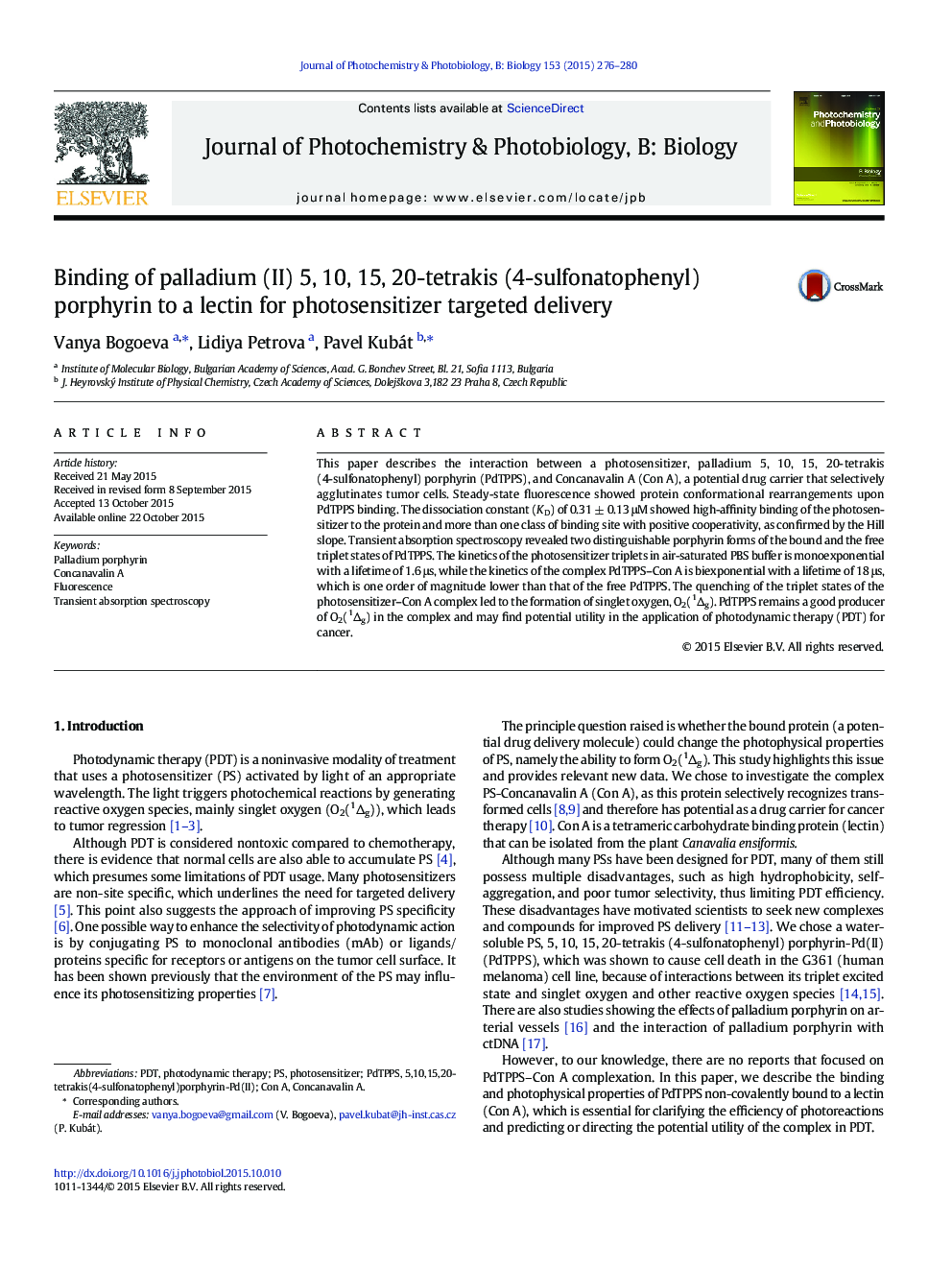| Article ID | Journal | Published Year | Pages | File Type |
|---|---|---|---|---|
| 30130 | Journal of Photochemistry and Photobiology B: Biology | 2015 | 5 Pages |
•PdTPPS strongly bound to Con A using more than one binding site.•The PdTPPS triplets bound to Con A exhibited slower kinetics.•The PdTPPS–Con A complex remains a good producer of O2(1Δg).
This paper describes the interaction between a photosensitizer, palladium 5, 10, 15, 20-tetrakis (4-sulfonatophenyl) porphyrin (PdTPPS), and Concanavalin A (Con A), a potential drug carrier that selectively agglutinates tumor cells. Steady-state fluorescence showed protein conformational rearrangements upon PdTPPS binding. The dissociation constant (KD) of 0.31 ± 0.13 μM showed high-affinity binding of the photosensitizer to the protein and more than one class of binding site with positive cooperativity, as confirmed by the Hill slope. Transient absorption spectroscopy revealed two distinguishable porphyrin forms of the bound and the free triplet states of PdTPPS. The kinetics of the photosensitizer triplets in air-saturated PBS buffer is monoexponential with a lifetime of 1.6 μs, while the kinetics of the complex PdTPPS–Con A is biexponential with a lifetime of 18 μs, which is one order of magnitude lower than that of the free PdTPPS. The quenching of the triplet states of the photosensitizer–Con A complex led to the formation of singlet oxygen, O2(1Δg). PdTPPS remains a good producer of O2(1Δg) in the complex and may find potential utility in the application of photodynamic therapy (PDT) for cancer.
Graphical AbstractFigure optionsDownload full-size imageDownload as PowerPoint slide
